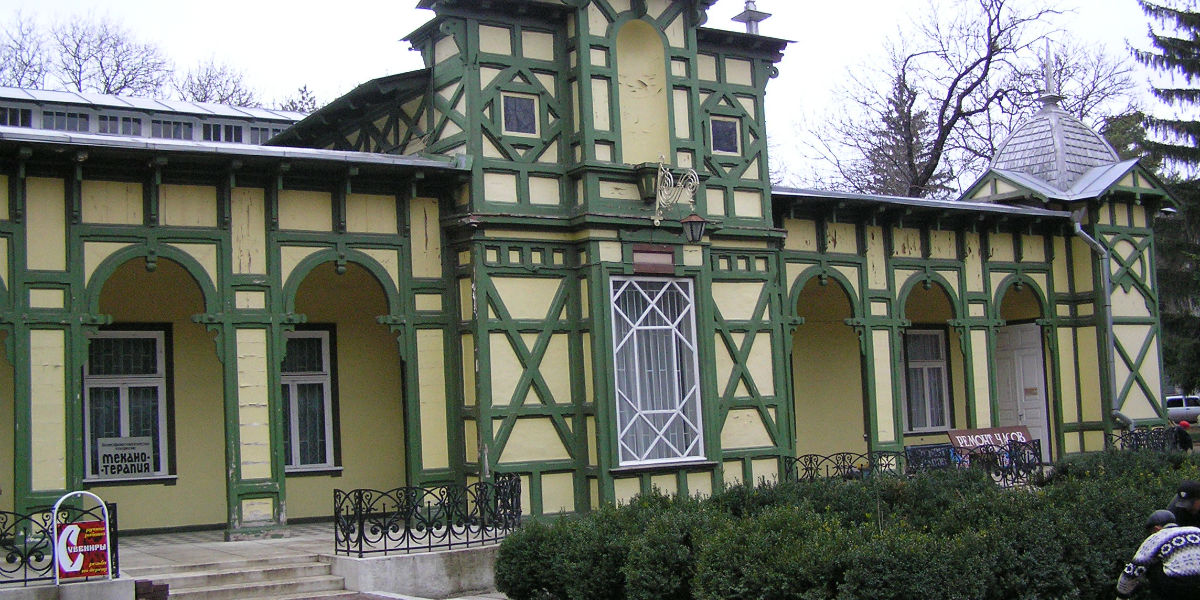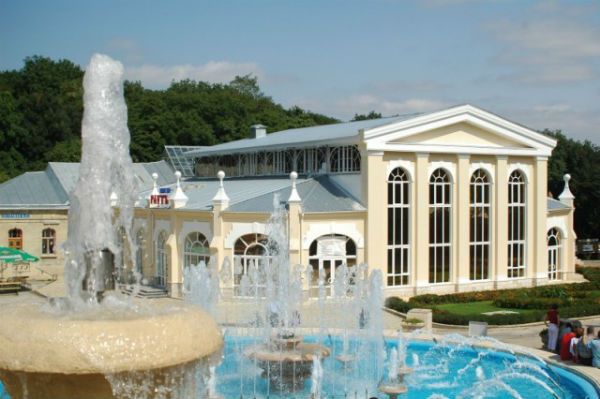Yessentuki is a pearl among the Russian resorts. Touristic Center “Yessentuki” is the official dealer of the local resorts. It invites you to enjoy the relaxation and recreation in Yessentuki helping you to book trips to resorts of Yessentuki and providing the prices of sanatoriums for the effective treatment and rest.
It offers an experienced medical staff of sanatoriums of Yessentuki resorts, a century-old experience in the medical treatment with the mineral waters of “Yessentuki 4”, “Yessentuki 17” and the mud of the Tambukan Lake. Experienced consultants of the “Yessentuki” Touristic Center (+8793461265) will pick up the necessary sanatoriums in Yessentuki and the whole Caucasian Mineralnye Vody (Mineral Waters) as well as in Kislovodsk, Pyatigorsk and Zheleznovodsk in accordance with treatment concept and budget.
Indications for treatment:
Diseases of the digestive system:
Chronic gastritis, non-acute gastroduodenitis, peptic ulcer, 12 duodenal ulcer in remission or fading exacerbation without motor insufficiency of the stomach and a tendency to bleed. Chronic colitis, mild and moderate enterocolitis (except stenosing, tuberculosis, ulcers, bacterial and parasitic types). Non-acute dyskinesia of intestines, biliary tract and gall bladder. Gall-lithiasis except the forms of complicated infection and requiring surgical intervention. Chronic hepatitis, cholecystitis, cholangitis, pancreatitis of different etiology with no inclination to frequent exacerbations or in remission.
Peripheral vascular disease:
Obliterating atherosclerosis of the limb vessels without ulcers and gangrene as well as after reconstructive operations on peripheral vessels (6-8 weeks after surgery). Occlusive disease with blood circulation of lower limbs of I and II phases during the period of stable remission. Chronic venous insufficiency on the basis of veins varicose. Residual symptoms after phlebitis, thrombophlebitis of the lower limbs (no sooner than 2 -4 months).
Diseases of the nervous system:
Backbone osteochondrosis with reflex and radicular syndromes, conditions after the removal of disc hernia, plexitis, polyneuritis, neuritis of the facial and trigeminal nerves, lesions of individual limb nerves, non-acute neurofibromiositis. Diseases of the autonomic nervous system: autonomic polyneuritis, solar plexitis, simpatoganglionity after the acute period. Injuries of nerves – injuries of roots, plexus and nerve trunks that do not require surgical intervention. Diseases and consequences of traumas of the central nervous system: residual effects after suffering encephalitis, arachnoiditis and encephalomyelitis after the acute period (not earlier than 3 months after disease). Cerebrovascular diseases: consequences of cerebral circulation problems in the recovery period after 4 – 6 months.
Gynecological diseases:
Chronic salpingitis, oophoritis 2 months after the exacerbation. Chronic metritis, endometritis 4 weeks after the exacerbation. Chronic parametritis 4-6 weeks after the acute period. Pelvic adhesions of the peritoneum. Infiltration after surgery of uterus, tubes and ovaries diseases after the acute period of 6-8 weeks after the surgery. Improper uterus position: fixed or subfixed retroflection, retroversion after inflammation of female genitals or as a result of pelvic adhesions of the peritoneum. Ovarian dysfunction infantilism or uterine hypoplasia, including in conjunction with chronic inflammation of female genital organs. Infertility resulting from inflammatory diseases, menopausal syndrome.
Diseases of the musculoskeletal system:
Arthritis and polyarthritis of non-tubercular origin: rheumatoid arthritis in the inactive phase with the minimum and average activity of the process, infectious polyarthritis of certain etiology (in case if the process’s activity is not above the II degree), deforming osteoarthritis, osteochondrosis, spondylosis, spondylarthritis, ankylosing spondylitis (in case if the process’s activity is not above the II degree without ) without visceritis. Consequences of fractures of the bones and limbs with delayed consolidation; chronic synovitis and bursitis of different localizations, tendovaginitis, myositis, fibromiositis, myalgia, epicondylitis, stiloidity; hematogenous osteomyelitis (except tuberculosis) which does not require surgical intervention. The medical course for the patients with the above mentioned diseases is possible if they are able to move independently.
“Lesnaya Polyana” sanatorium also accepts patients disable to move (with diseases and injuries of spinal section)
Skin diseases:
Psoriasis in the stationary regressive form. Neurodermatitis – limited and diffuse, chronic stage. Eczema and seborrheic disease in the chronic stage. Scleroderma: limited patchy and spread (in the inactive stage); the systematic one with the lesion of the musculoskeletal system in the inactive stage between courses of medical therapy. Lichen planus – limited and spread forms of the chronic phase.
Diseases of the ear, nose and throat:
Chronic pharyngitis (subatrophic, atrophic, hypertrophic without exacerbation (in summer)). Chronic tonsillitis – uncomplicated, compensated, often exacerbated. Chronic laryngitis – subatrophic, atrophic. Chronic hypertrophic rhinitis – atrophic, subatrophic. Chronic sinusitis and condition after surgeries of the paranasal sinuses in the absence of complications (no earlier than 2 months after the surgery). Chronic inflammation of the middle ear and Eustachian tube in remission. Otosclerosis, condition after surgery.
Urological diseases:
Chronic prostatitis, chronic vesiculitis (non-tubercular) in remission without the structure of the urethra and without residual urine. Chronic cystitis of non-tubercular character. Urolithiasis including complicated pyelonephritis and cystitis. Chronic pyelonephritis in remission, the latent form of pyelonephritis. Secondary pyelonephritis without nitrogen-excretory function of kidneys and without hypertension. Residual effects of acute pyelonephritis not earlier than 3 months after relieving the acute process.
Other diseases:
Obesity of a primary, alimentary-constitutional phases without the effects of circulatory decompensation. Diathesis; phosphate-uric, uraturia, oxaluria with different clinical symptoms. Mild thyrotoxicosis of primary and secondary genesis. Mild hypothyroidism with obesity and degenerative changes in the joints and spine.
Sanatoriums: Lesnaya Polyana, Runo, Pyatigorsky Narzan, Gallery Palace, named after M.Y. Lermontov, named after S.M. Kirov, Pyatigorye, Rodnik, Central Military Sanatorium, Leninskiye Skaly.



